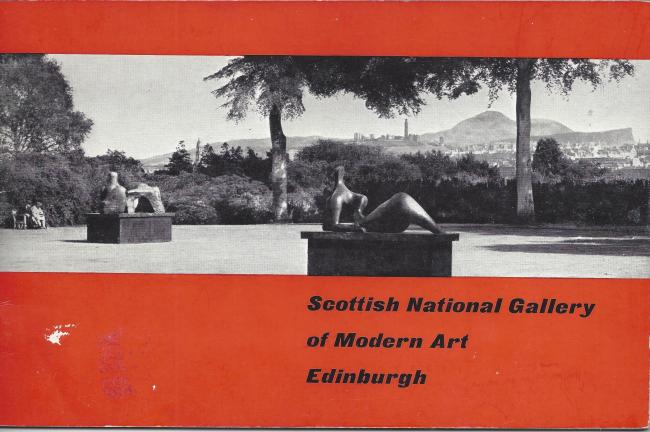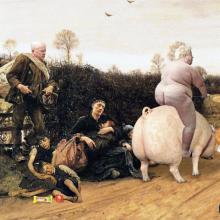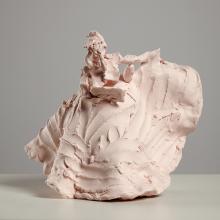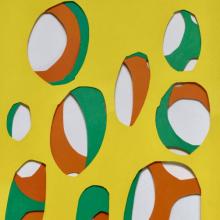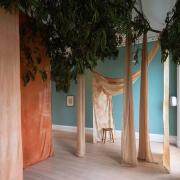
The idea that visiting a gallery can be a healing balm is manifested in Shipping Roots, by Keg de Souza. This is the current exhibition at Inverleith House, Royal Botanic Garden.
From the first moment you enter the building, your nostrils and lungs are filled with the deeply calming aroma of eucalyptus. Eucalyptus is widely used as a natural cold remedy, by decreasing mucus and expanding the bronchi and bronchioles of your lungs.
As a visitor assistant on the front desk put it, by late August (when the exhibition ends), ‘I’m going to feel so healthy … breathing this in every day’. In this sense it is truly an immersive experience, and one which leaves you both calmed and enlightened.
Infusion
Eucalyptus infuses the exhibition spaces, especially the first room. Large pieces of silk, dyed using various types of eucalyptus, hang from the ceiling. Apparently, transforming the eucalyptus into dyes was a way to circumvent strict regulations about the importation of the plant. These long pieces of silk transform the space into something quite magical – you feel as if you are in a woodland. This is emphasised by the laden branches of dried eucalyptus which hang down. Throughout the room, leaves lie around, including next to stools made of eucalyptus. The plant pervades every nook and corner.
The exhibition combines contemporary work and research with material from the RBGE archives. These include beautiful botanical drawings collected by Hugh Cleghorn. While working for the East India Company, Leghorn compiled detailed drawings by local artists of India’s rich flora. The full collection contains over 3,000 drawings and manifests the colonial links highlighted by the exhibition. The drawings also emphasise the strong connections between art and nature. In addition to their horticultural significance, they are beautiful. Their use in this exhibition also illustrates the way that archival material can add great depth and richness to an exhibition, rather than being dismissed as dry and dusty. Archives can and indeed should be living things, not merely anthologies of the past.

Room to breathe
One of the rooms upstairs has been set aside as a Reading Room. With the eucalyptus still wafting up from below, this is a space in which to absorb what you have been looking at in a tranquil atmosphere. A range of books on related matters are available for dipping into.
As you sit there, the only noises come from the squeaking of rubber soles on the wooden floor, whispers of other visitors, and children playing in the activity area next door. All exhibitions need such spaces in which to breathe. From the reading room you look out, across the lawn and enjoy one of the best views of the city; a stunning vista from Arthur Seat across to Castle Hill.
Other parts of the exhibition look at other plants which have been shipped around the world. Prickly pears are the focus of the ‘Green Hell’ room, through which unsettling music trickles.
The final room is devoted to ‘fleece fugitives’. These are the plant species which, as ‘seed hitchhikers’ were carried in the fleece of sheep, some of them becoming invasive species. The way that horticultural transportation can be disruptive is a key theme of the overall exhibition. There is a cold feeling in the room, leaving you with a desire to return to the entrance where those arriving are given a warm welcome and their first whiff of eucalyptus. This plant promotes greater parasympathetic activity in your body, thus promoting relaxation. Shipping Roots will undoubtedly leave you refreshed and thoughtful.
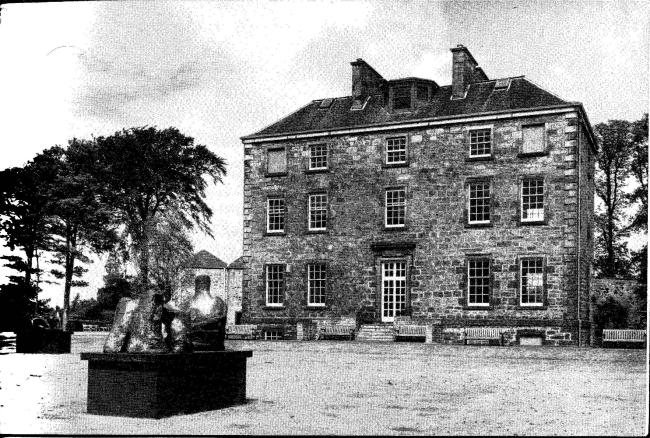
Deep roots
Shipping Roots connects to previous exhibitions at Inverleith House which have emphasised the deep roots between art and nature. They also reflect the building’s past ‘iteration’ as the home of the Gallery of Modern Art, from 1960 until the early 1980s. An early 1960s guide to the then new Scottish National Gallery of Modern Art describes how the ‘conversion’ of 1956–59 created a fantastic exhibition space.
The author of the booklet goes on to say that ‘it is remarkable how this process of clearing away, done with the object of providing a simple environment for modern pictures, has also revived the classical air of the whole interior’.
Almost 40 years after the Gallery of Modern Art moved West, Inverleith House, refurbished in 1990 and 2004, remains one of the best art exhibition spaces in the city. Shipping Routes makes excellent use of the gallery spaces and is strongly recommended.—Charlie Ellis
Shipping Routes runs at Inverleith House, Royal Botanic Garden until 27th August 2023. Open daily, 10.30am–5.15pm. Free entry.
[Charlie Ellis is a researcher and EFL teacher who writes on culture, education and politics.]
